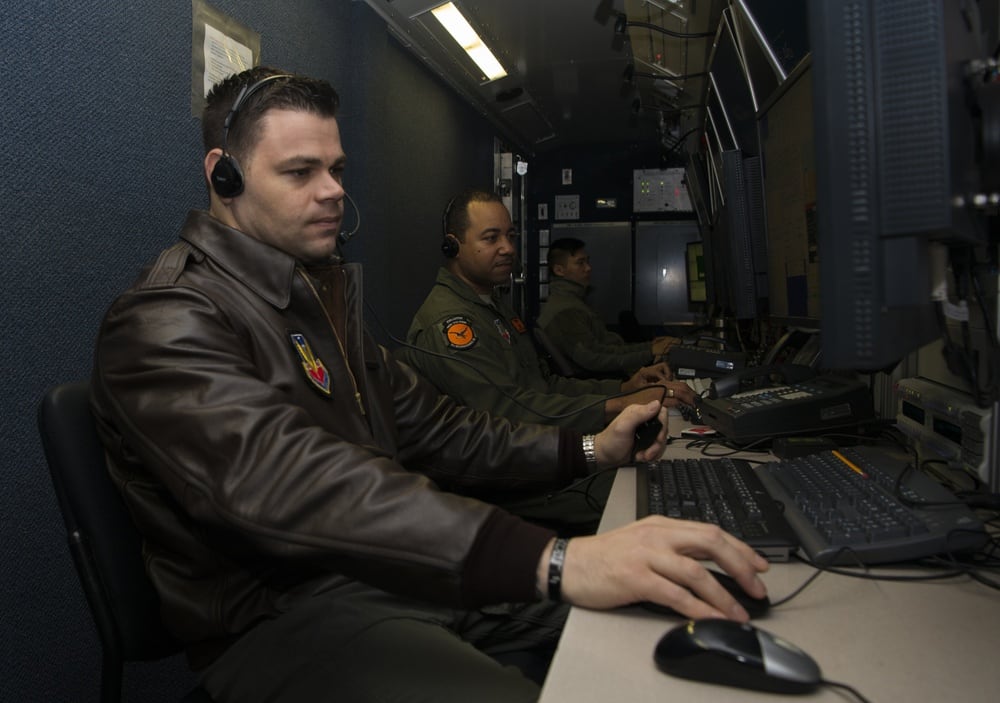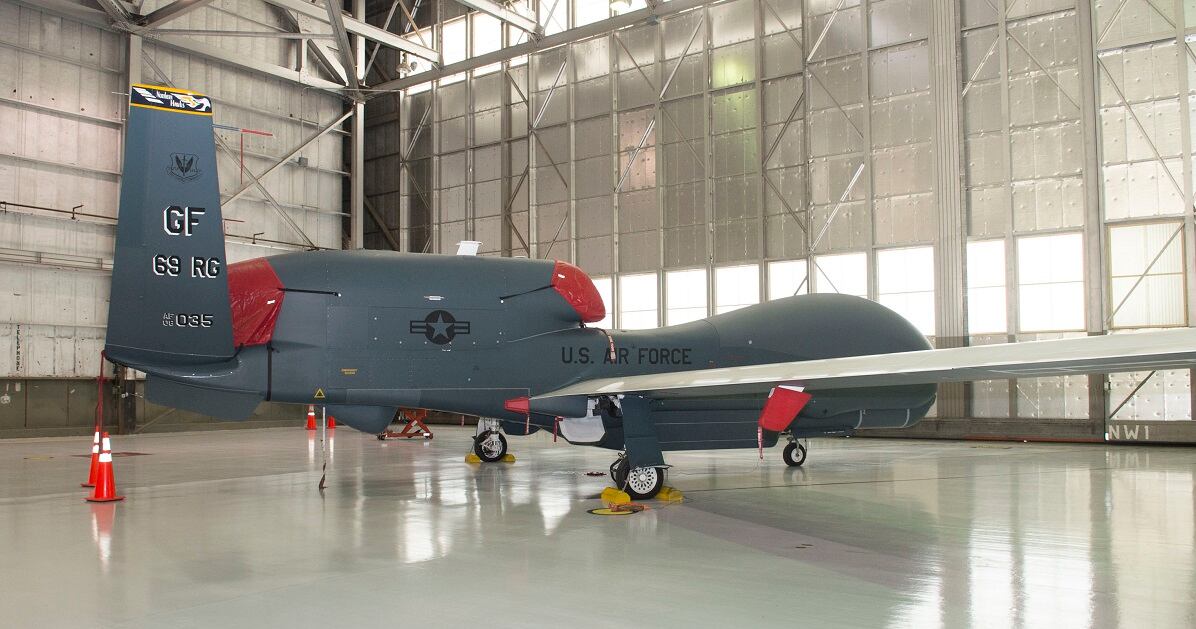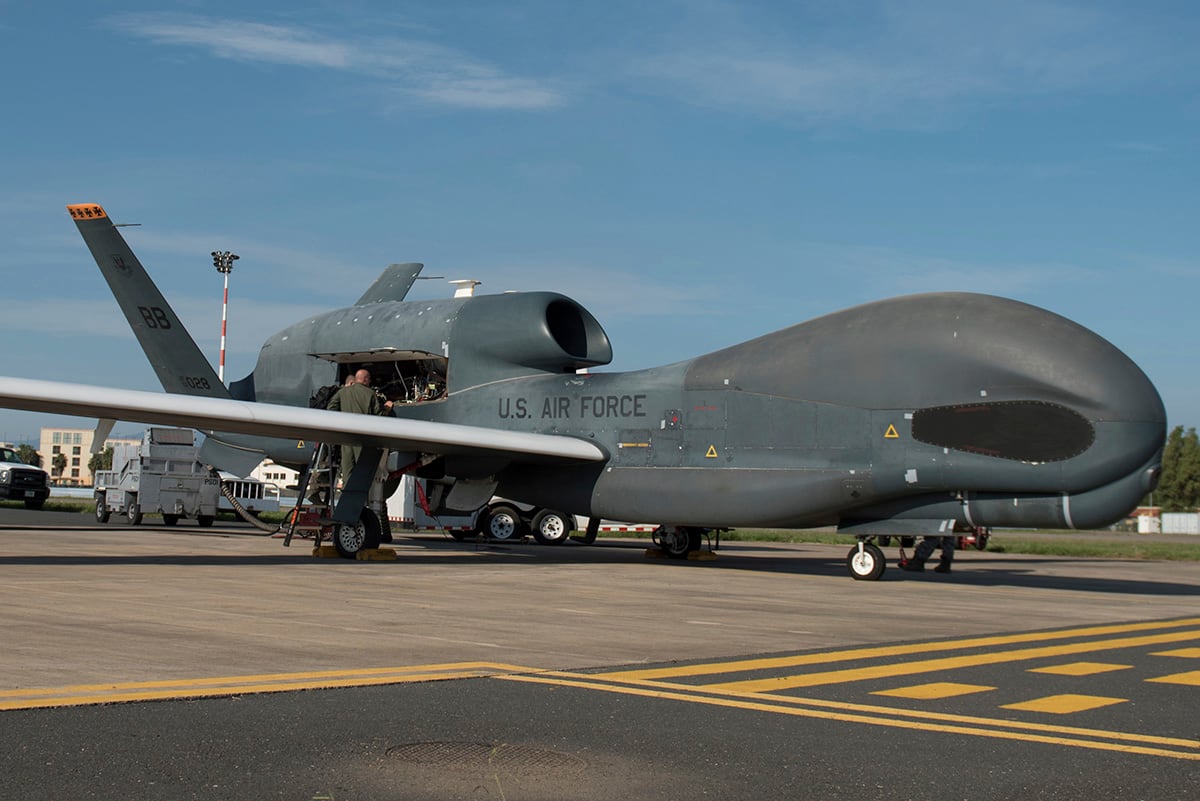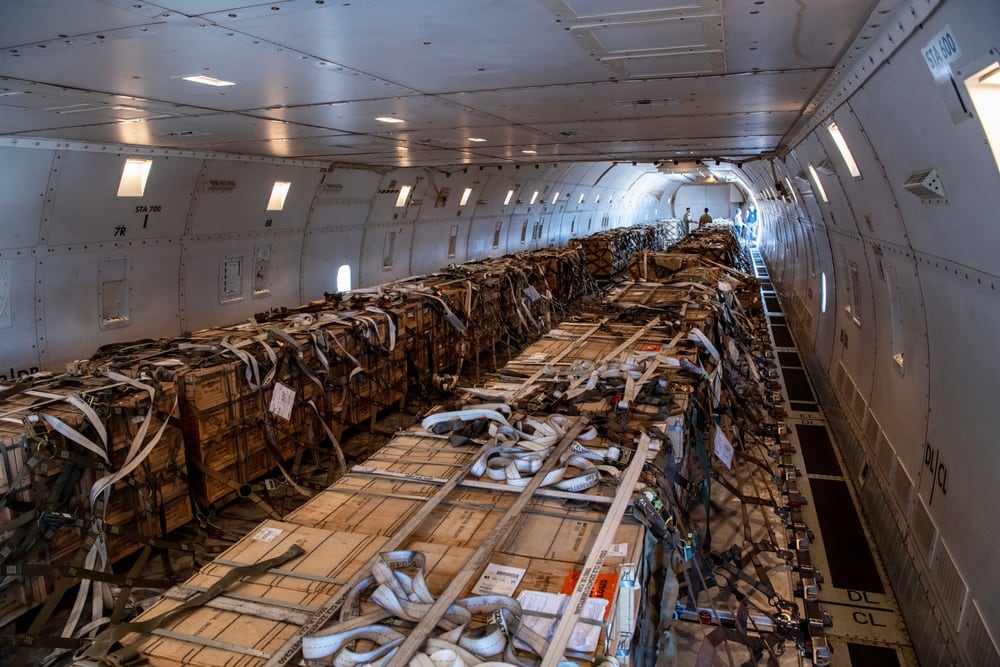The Air Force is fixing a bureaucratic blunder that has given enlisted drone pilots whiplash as they say goodbye to the RQ-4 Global Hawk.
Five years after the service started allowing enlisted airmen to fly an aircraft for the first time since World War II, those crews are preparing for new assignments as their reconnaissance drones retire.
Air Force Chief of Staff Gen. Charles “CQ” Brown Jr. and Chief Master Sergeant of the Air Force JoAnne Bass floated their plan for those airmen in a November 2021 letter. They laid out options for the pilots to commission as officers, which requires a college degree, or to pursue enlisted jobs outside the cockpit like flight engineer, aircraft loadmaster or refueling specialist.
“We felt calm; we felt taken care of and cared for,” the enlisted RQ-4 pilots wrote in a drafted plea to federal officials that was obtained by Air Force Times. “We volunteered for this experiment, never did the service wrong, and the Air Force decided to go a different route. Understandable.”
RELATED

But for those 74 airmen, the promises haven’t panned out.
Many waited eight months before they were asked to list their three most preferred jobs. Some were allowed to commission as long as they stayed in the remotely piloted aircraft field, the letter said. One or two others were approved to train into non-RPA jobs.
“We had individuals who met the criteria for commissioning apply for the boards and were immediately denied. We had individuals who applied for other enlisted aircrew positions get immediately rejected. We even had enlisted pilots apply for typically short-staffed jobs [and] get denied,” the airmen wrote.
Over the summer, they received bad news: Many were disqualified for most of the nearly five dozen careers they were offered in lieu of flying the Global Hawk.
RELATED
Most of the positions were in understaffed fields related to information technology or communications, one airman told Air Force Times. They were tailored to early- and mid-career airmen, with few jobs senior enough for those transferring in from the Global Hawk enterprise.
In short: enlisted pilots with two decades of experience in multiple fields across the Air Force were deemed too experienced or high-ranking for the opportunities available for them.
“We would not be able to go into another enlisted aircrew position, nor would we be able to return to our previous career field,” the airmen added in the letter. “Instead, we would have to compete against the rest of the Air Force during the annual retraining cycle.”
That would pit the small group of enlisted Global Hawk pilots against nearly 1,200 other enlisted airmen, noncommissioned officers and senior NCOs for jobs that may not fit their skills or interests.
Their complaints have attracted the attention of officials from Air Combat Command, which oversees the drone force, to the Air Force’s top echelon.
RELATED

In an exclusive interview on Tuesday, Chief Bass told Air Force Times that after she and Brown signed their memo last year, another decision was made elsewhere to shuffle the enlisted pilots back into the Air Force’s usual process for moving airmen into new jobs.
“That was not the intent,” Bass said. “We have worked really hard within the past few weeks to make sure to get the train back on the track.”
Each enlisted pilot will be afforded the options laid out in last year’s memo, she said. Still, those who want to become officers still need to meet the requirements to commission and pass that board selection process.
“Air Force senior leaders are committed to retaining and supporting enlisted pilots as they reach the end of their original commitments,” service spokesperson Rose Riley said Tuesday.
Unit commanders who oversee enlisted drone pilots will work with the Air Force Personnel Center to personally manage their “deliberate” transition to new jobs, she added.
The pilots simply want the Air Force to honor their original plan or let them bow out quietly.
RELATED

“Allow us, close to the end of our careers, to leave our great legacy gracefully after our 20 years of service without having to go through another career field change, ultimately costing the service more money to train us,” the airmen wrote. “For those still willing to serve our nation, we ask that the hurdles every one of us has faced in these past 10 months in our attempt to pursue other career fields be removed.”
The Air Force has downsized its Global Hawk fleet from 36 to 10 over the past several years. It plans to retire the rest of the drones in 2027 after more than 20 years in service.
Military officials worry the planes wouldn’t survive against advanced anti-aircraft weapons and believe satellites and other jets can gather the same data. Instead, aircraft manufacturer Northrop Grumman is repurposing the drones as test assets that track American hypersonic weapons now in development.
The 12th Reconnaissance Squadron’s last RQ-4 left Beale Air Force Base, California, in July. That squadron could close by the end of the year, the Air Force said in a press release.
The 319th Reconnaissance Wing at Grand Forks AFB, North Dakota, planned to send off 20 of its Global Hawks by the end of July. Grand Forks will fly its remaining RQ-4s around the world for the next several years.
RELATED

The in-demand aircraft can loiter at 60,000 feet for more than 30 hours without refueling, while collecting images and electronic signals from assets nearby.
“We have been the eyes and ears in the sky during some of the most challenging moments in American history, which the public will never know about,” the enlisted pilots wrote in their draft letter.
“We were there when the hastened withdrawal from Afghanistan caused communication issues, and our aircraft needed to provide the relays,” they said. “We provided images of what was occurring in and around Bagram [Air Base].”
And over the past several months, Global Hawks have captured real-time images of the evolving war in Ukraine from high-altitude paths over eastern Europe.
“We have received the tasks, and we have executed them without flaw,” the airmen said.
Rachel Cohen is the editor of Air Force Times. She joined the publication as its senior reporter in March 2021. Her work has appeared in the Washington Post, the Frederick News-Post (Md.), Air and Space Forces Magazine, Inside Defense, Inside Health Policy and elsewhere.




